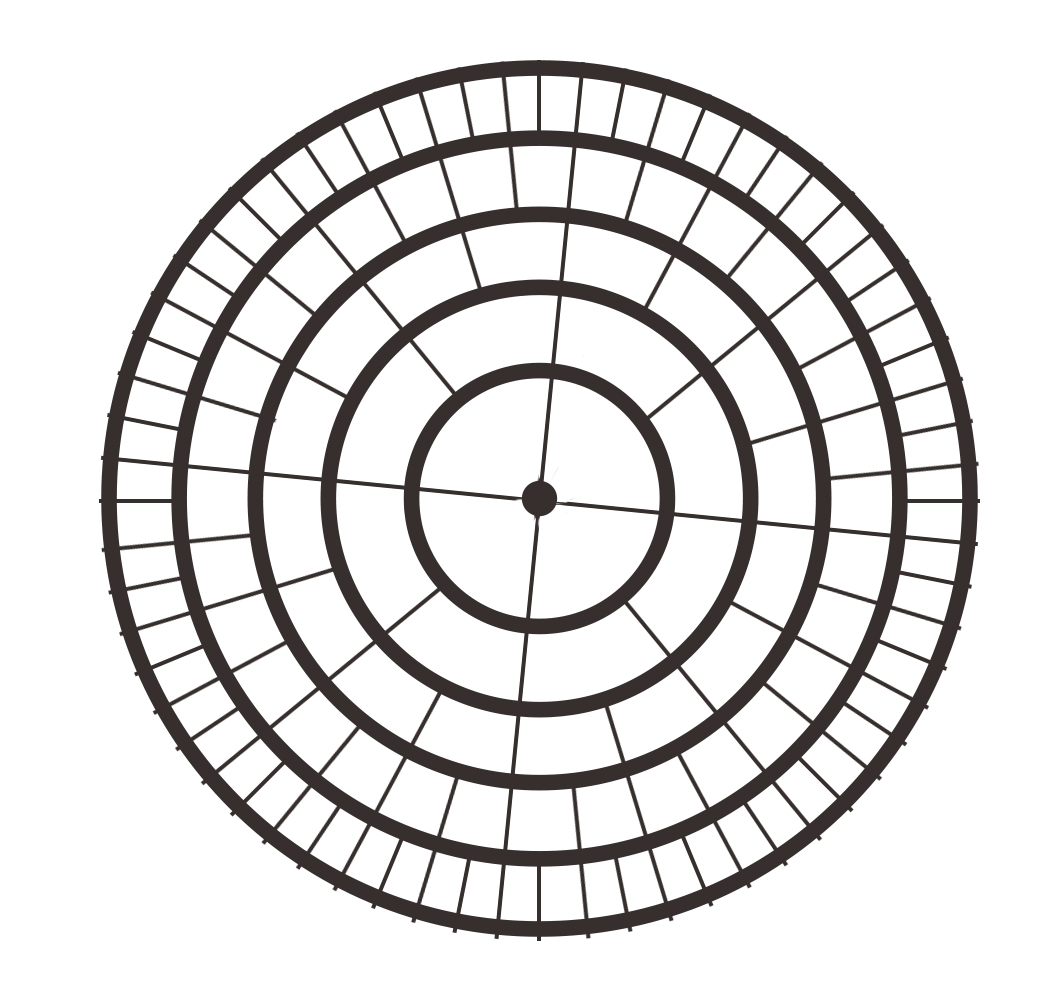More complex maze generation by circular implementation of the grid
See original GitHub issueIt would be great if a circular maze, which is usually more complex to be comprehended by the human mind, could be implemented using the algorithm that is already here.
What I have in mind is the following cell structure:

The design above is not geometrically optimal but could be implemented the following way:
- The rows can be represented as a set of concentric circles and columns seperated by lines between two circles.
- The key difference would be that columns will be looped i.e., the last column will be connected to the first column
- In order to maintain an even distribution in the size of the cell, I recommend doubling the number of columns for every row without which there would be an exponential increase in cell size with increase in number of rows. This would greatly add to the complexity and at the same time maintain the cell size. -That would imply, only the rows (number of circles) will be given as input and the number of columns would be : pow(2,rows+2) -The condition for a cell to be start/exit would be row = num_rows-1
I have implemented the above condition but I am yet to commit the changes as visualizing this in matplotlib is not as simple as doing that for a grid. The following is a manual visualization from the raw outputs of generate_maze.

Please do let me know if you’re more interested in this and have ideas about visualzing this implementation in matplotlib
Issue Analytics
- State:
- Created 6 years ago
- Comments:7 (7 by maintainers)
 Top Results From Across the Web
Top Results From Across the Web
Maze generations: Algorithms and Visualizations. - H.urna
We will first have an overview of the maze world, we will then explore 6 different strategies and algorithms to generate random mazes;...
Read more >Maze generation algorithm - Wikipedia
Maze generation algorithms are automated methods for the creation of mazes. This maze generated by modified version of Prim's algorithm, below.
Read more >Maze Generation: Growing Tree algorithm - The Buckblog
Implementation -wise, this is one of the simplest algorithms (another reason to love it!). In fact, in my own implementation, the most complex...
Read more >Vortex Maze Construction - University of Waterloo
We join vortices into networks, leading to mazes that are difficult to solve. We also show some results generated with our techniques. 1....
Read more >maze generator — Blog
Comparison of the even MORE online maze generation websites ... Starting in the top left corner a simple 20x20 maze, a hexagonal grid...
Read more > Top Related Medium Post
Top Related Medium Post
No results found
 Top Related StackOverflow Question
Top Related StackOverflow Question
No results found
 Troubleshoot Live Code
Troubleshoot Live Code
Lightrun enables developers to add logs, metrics and snapshots to live code - no restarts or redeploys required.
Start Free Top Related Reddit Thread
Top Related Reddit Thread
No results found
 Top Related Hackernoon Post
Top Related Hackernoon Post
No results found
 Top Related Tweet
Top Related Tweet
No results found
 Top Related Dev.to Post
Top Related Dev.to Post
No results found
 Top Related Hashnode Post
Top Related Hashnode Post
No results found

Okay, yeah, I see what you mean. Might need a little restructure nefore it should be merged with
master. Reverted the pull request now.See my comments on the commit; with the way things are currently done, adding new features is going to be difficult. Can we un do the merge? We should either create a new branch under
devand put this there, or once some changes are made do a pull request to thedevbranch